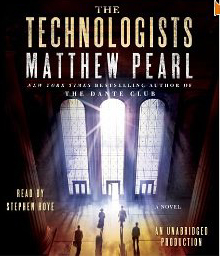 Marcus Mansfield never expected to be a member of the Massachusetts Institute of Technology's first graduating class in 1868. Only a few years earlier, as a Union solder, he'd endured daily torture in a Confederate prison camp. At the war's end he returns to New England to a job in an iron works where he is recruited by William Barton Rogers, the founder of MIT. In addition to students with traditional educational backgrounds, Rogers is looking for students with innate abilities to apply scientific principles to practical arts. He finds this in Marcus, whose mechanical modifications and inventions cause him to stand out among his factory peers. MIT's motto is the Latin Mens et Manus or "Mind and Hands" and Rogers can see that Marcus embodies this principle. When a series of calamities rocks the peaceful progress of post-Civil War Boston, MIT's and Marcus' uncertain futures collide with a past bound by tradition and fear of change. In the spring of 1868, Boston becomes the scene of several strange occurrences. Her normally busy, but orderly harbor is suddenly a chaotic sea of colliding ships and sunken cargo as compasses spin haphazardly. In the business district, windows melt mysteriously and unexpected explosions bring down buildings, injuring Bostonians. Speculation about the cause of these incidents ranges from natural disaster to God's wrath, but focuses on the dangers of technology in general and the threat the new technology college poses specifically. Instead of appealing to the experts at the college for help in solving the mystery of the catastrophes, the public condemns the school and its students. Marcus and several classmates form a secret society called "The Technologists", vowing to use their scientific knowledge, training and methods to prevent further destruction in the community and save the college.
Marcus Mansfield never expected to be a member of the Massachusetts Institute of Technology's first graduating class in 1868. Only a few years earlier, as a Union solder, he'd endured daily torture in a Confederate prison camp. At the war's end he returns to New England to a job in an iron works where he is recruited by William Barton Rogers, the founder of MIT. In addition to students with traditional educational backgrounds, Rogers is looking for students with innate abilities to apply scientific principles to practical arts. He finds this in Marcus, whose mechanical modifications and inventions cause him to stand out among his factory peers. MIT's motto is the Latin Mens et Manus or "Mind and Hands" and Rogers can see that Marcus embodies this principle. When a series of calamities rocks the peaceful progress of post-Civil War Boston, MIT's and Marcus' uncertain futures collide with a past bound by tradition and fear of change. In the spring of 1868, Boston becomes the scene of several strange occurrences. Her normally busy, but orderly harbor is suddenly a chaotic sea of colliding ships and sunken cargo as compasses spin haphazardly. In the business district, windows melt mysteriously and unexpected explosions bring down buildings, injuring Bostonians. Speculation about the cause of these incidents ranges from natural disaster to God's wrath, but focuses on the dangers of technology in general and the threat the new technology college poses specifically. Instead of appealing to the experts at the college for help in solving the mystery of the catastrophes, the public condemns the school and its students. Marcus and several classmates form a secret society called "The Technologists", vowing to use their scientific knowledge, training and methods to prevent further destruction in the community and save the college.The Technologists is a fascinating look at the industrialization of America in the 19th Century as well as an entertaining mystery. Pearl deftly weaves an intriguing plot around and among both historical and fictional characters and events. In an afterward he explains which characters actually existed and what became of them after the book's conclusion. One of the actual characters was the founder of MIT, William Barton Rogers. Rogers was passionate about starting a school that could meet the needs of a rapidly developing America. He dreamed of a school where teachers and students would work together conducting research and applying their findings to practical applications. He envisioned a school that would accept both men and women at all levels of social and economic status, who would live by the motto of Mens et Manus, using their study of the sciences for practical purposes, The future of the school was threatened in its infancy, though, because as the industrial revolution swept across the country and machines replaced workers, laborers and union leaders blamed technology for the loss of jobs. While people were entranced by the emerging technologies, their fears of the unknown made them distrust the technology school and its students. Harvard, the acknowledged premiere school of the time, also tried to squelch the fledgling college, and Pearl illustrates the rivalry through humorous and ingenious pranks.
Stephen Hoye, the narrator, makes an absorbing book even more appealing. While Rogers placed no importance on class distinction, 19th Century Bostonians did and Hoye does a superb job of giving the appropriate twang, lilt, affectation and accent to each of the characters from the least educated to the most studied, from the lowest born to the most privileged. This look at MIT's beginnings would be of great interest for adults, but would be especially valuable for students choosing a college, prompting them to look at a school's past as well as its present. It would also make a wonderful high school graduation gift.
The Technologists by Matthew Pearl
Read by Stephen Hoye
Random House Audio, unabridged: 18.5 hours on 15 CDs





